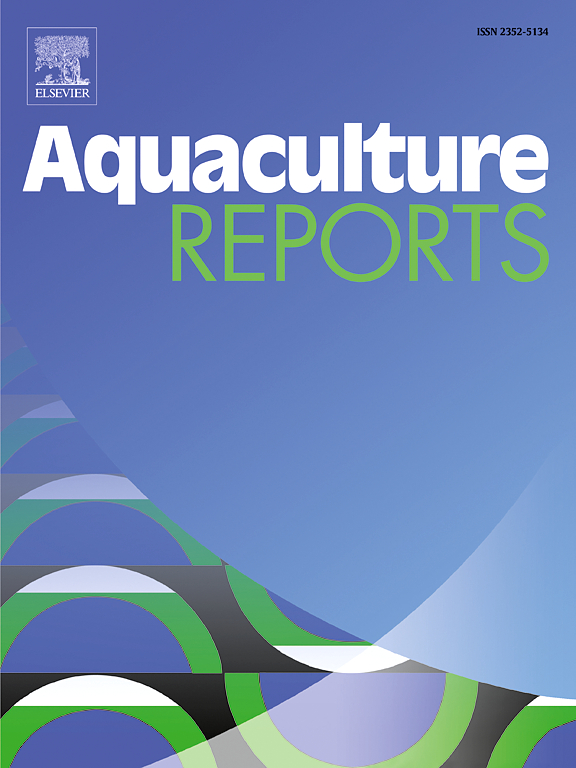Influence of temperature on growth and oxidative status of juvenile Southern black drum (Pogonias courbina)
IF 3.2
2区 农林科学
Q1 FISHERIES
引用次数: 0
Abstract
Temperature has a strong influence on fish metabolism, therefore it impacts aquaculture production. This study aims to understand its effects on survival, growth, and oxidative stress responses of Southern black drum Pogonias courbina. Therefore, 450 juvenile fish (weight 0.58 ± 0.19 g) were exposed in triplicate to 23, 26, and 29°C for 25 days. Fifty fish were stocked in circular tanks (300 L) connected to recirculating aquaculture systems with temperature control. Fish were fed four times a day. Temperature did not affect fish survival, which was above 98 % in all treatments. Growth was significantly improved in higher temperatures. The final weight at 29°C was 2.9-fold higher than those fish kept at 23°C. The same pattern was found in the specific growth rate, which was higher at 29°C than at the other temperatures evaluated. Fish reared at 26 and 29°C also had higher total feed intake and better apparent feed conversion. Lipid peroxidation was higher in muscle, gill, and liver of fish kept at the lowest temperature (23°C). In addition, this temperature also triggered upper regulation of the total antioxidant capacity in gill and liver, compared to 29 °C. Protein thiol levels in fish liver were higher at 29°C than at 23°C. The best performance of fish kept at 29°C may be related to the increased total feed intake coupled with better apparent feed conversion, along with lower lipid and protein damage, plus lower investment in antioxidant capacity. Based on the present results, we concluded that among the tested temperatures, 29°C is the best temperature for production of juvenile P. courbina.
求助全文
约1分钟内获得全文
求助全文
来源期刊

Aquaculture Reports
Agricultural and Biological Sciences-Animal Science and Zoology
CiteScore
5.90
自引率
8.10%
发文量
469
审稿时长
77 days
期刊介绍:
Aquaculture Reports will publish original research papers and reviews documenting outstanding science with a regional context and focus, answering the need for high quality information on novel species, systems and regions in emerging areas of aquaculture research and development, such as integrated multi-trophic aquaculture, urban aquaculture, ornamental, unfed aquaculture, offshore aquaculture and others. Papers having industry research as priority and encompassing product development research or current industry practice are encouraged.
 求助内容:
求助内容: 应助结果提醒方式:
应助结果提醒方式:


